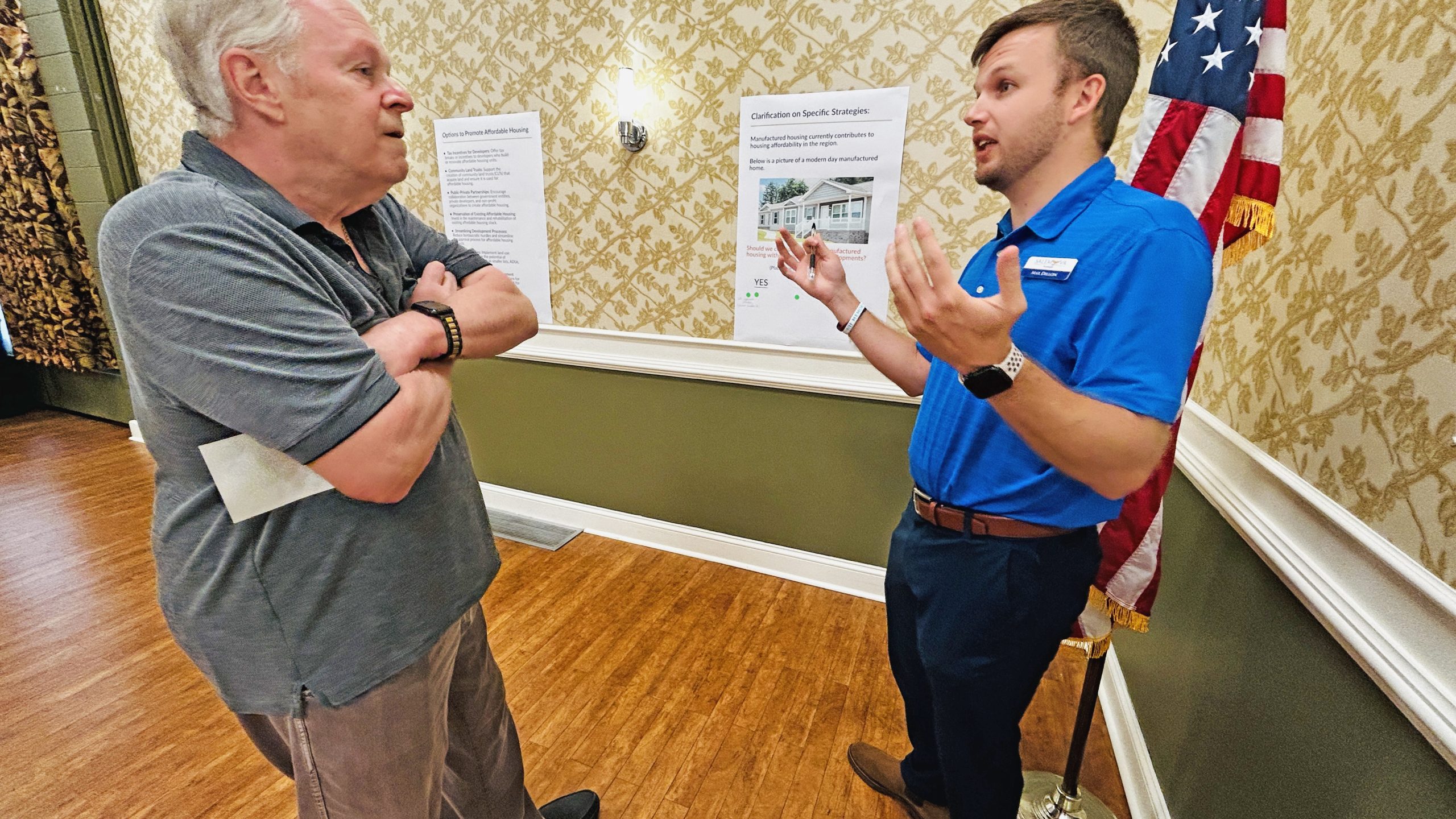

By Edmee CR Hasler
In a move to shape the future of the city for the next quarter-century, Salem has embarked on a comprehensive rewrite of its existing comprehensive plan. The initiative, mandated by Virginia State Code, is designed to reflect the community’s aspirations and address emerging challenges with innovative strategies. An open house, which allowed community members the opportunity to learn more and provide feedback, was held on Aug. 13 at the Salem Civic Center.
“Every five years, we are required by state law to review our comprehensive plan,” said Mary Ellen Wines, a key figure in the city’s planning department. “This time around, we felt it was crucial to not just review but completely rewrite our plan. We want to take what’s great about Salem and build on it, using new practices that can carry us into the next 20-25 years.”
To lead this ambitious project, Salem enlisted the expertise of Glenn Walters from Town Studio. Walters, known for his community-focused planning approach, emphasized that the plan is not just a bureaucratic exercise but a deeply community-driven process. “A comprehensive plan is totally community-based,” Walters explained. “Our job is to listen to as many voices as possible and formulate a vision that captures what Salem should be in the next 25 years.”
The new plan is organized around interlocking themes rather than the traditional separate elements like housing, transportation, and economic development. Walters described this thematic approach as a way to ensure the city’s growth is integrated and holistic. “We’ve moved away from the old model of separate elements because we’ve realized these things overlap and weave together,” he said. “For example, we’re looking at complete and safe streets, access to parks, and areas for redevelopment as interconnected themes.”
One of the plan’s focal points is housing, with a particular emphasis on affordability and diversity. “Housing affordability is a critical issue we’ve heard from the community,” Walters noted. “People want a variety of housing options at different price points so that everyone, including our kids, can afford to live here. But to achieve this, we’ll need to make some tough policy decisions.”
The city’s planning process has been extensive, involving community workshops, online surveys, and partnerships with local organizations to ensure broad participation. “We’ve made every effort to involve as many people as possible,” Wines said. “It’s been in the news, on social media, and we’ve even reached out to churches to encourage participation.”
During the week of April 7, the Comprehensive Plan team held multiple community engagement sessions focused on housing issues. These meetings included diverse groups such as real estate professionals, builders, high school students, business owners in East Bottom, and the general public.
Overall, participants supported integrating higher-density housing into existing neighborhoods and new developments to boost diversity and affordability. However, many emphasized the need to maintain Salem’s sense of community, safety, and quality while addressing current and future housing needs.
Feedback indicated a cautious approach to population and housing growth, with residents preferring that new units align with the scale and character of surrounding neighborhoods. There was an openness to various housing types—like patio homes, townhouses, and small apartment buildings—though many suggested these be limited to new developments rather than historic areas.
Specific topics like Accessory Dwelling Units (ADUs) and Manufactured Homes sparked mixed opinions. While recognized for their potential to enhance affordability, further discussion is needed to clarify their approval processes and regulatory frameworks.
As the plan continues to take shape, Salem residents are encouraged to stay engaged. The city aims to finalize the plan with clear strategies and an actionable roadmap that outlines near-term, mid-term, and long-term goals. “This is just the beginning,” Walters said. “The real work begins when we start implementing these ideas and turning them into reality.”
Salem’s comprehensive plan is poised to be a dynamic blueprint that not only reflects the current needs of the community but also anticipates future growth, ensuring that Salem remains a vibrant and thriving city for years to come.




